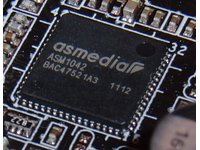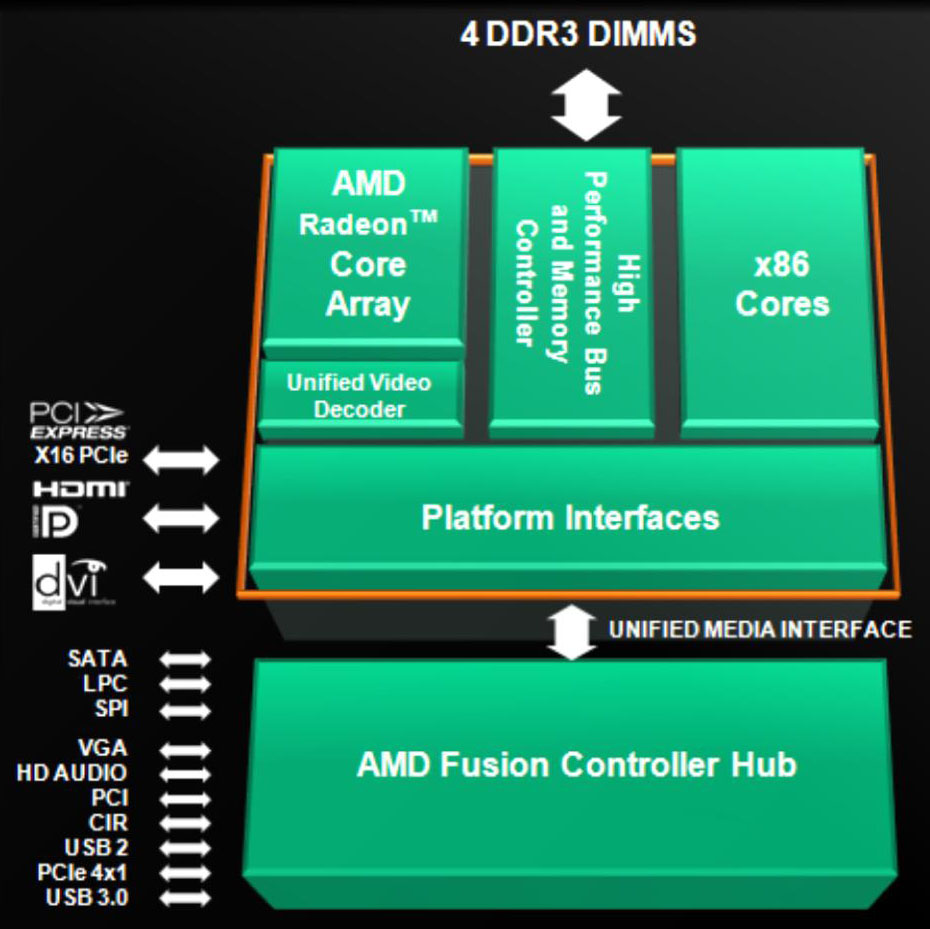Does The USB 3.0 Controller On Your Motherboard Matter?
The Controller Lineup


As mentioned on the previous page, the first motherboards and add-in cards to support USB 3.0 employed NEC’s PD720200 controller. A number of other players have joined the game since then, though. All of the motherboards shipping today use newer logic like ASMedia's ASM1042 and Etron's EJ168. Others, based on AMD's A75 chipset, employ integrated USB 3.0 support. There are also Renesas controllers that build on NEC's previous design to reportedly reduce power consumption by 85 percent. VIA has its own SuperSpeed controller, too.
Today we're testing the ASMedia and Etron models. Both USB 3.0 host controllers map two ports to a single PCIe x1 lane, allowing motherboard vendors to easily add USB 3.0 connectivity using chipset-based PCI Express.
A third-party controller is mandatory if you buy an Intel-based platform with USB 3.0 support because Z68, P67, and X58 (all of the enthusiast-oriented platforms in the company's portfolio) fail to include native USB 3.0 support. X79, expected next month, doesn't include this functionality either.
Intel’s delayed support is a disappointment, particularly because AMD is already wrapping integrated USB 3.0 into its A75 chipset for Llano-based APUs (unfortunately, you'll have no such luck with the 990FX chipset built to support Zambezi-based processors).
You have to be careful, though. AMD enables the Socket FM1 ecosystem through a pair of Fusion Controller Hubs, A75 and A55. The lower-end A55 solution is stuck with 3 Gb/s SATA support and it doesn't accommodate USB 3.0 data rates. In very entry-level systems, those probably aren't problems. But if you're really performance-focused, stepping up to A75 gets you six SATA 6Gb/s ports, FIS-based switching, and four USB 3.0 ports.
| Feature | AMD A75 | AMD A55 |
|---|---|---|
| Platform | Socket FM1 | Socket FM1 |
| SATA Connectivity | 6 x SATA 6Gb/s | 6 x SATA 3Gb/s |
| Software RAID | 0, 1, 10 | 0, 1, 10 |
| FIS-Based Switching | Yes | No |
| HD Audio | Yes | Yes |
| General-Purpose PCIe | 4 x PCI Express 2.0 lanes | 4 x PCI Express 2.0 lanes |
| UMI (Connection To APU) | Four-lane PCIe + DisplayPort | Four-lane PCIe + DisplayPort |
| USB 3.0/2.0/1.1 | 4/10/2 | 0/14/2 |
| SD Controller | Yes | Yes |
| 33 MHz Legacy PCI | Up To Three Slots | Up To Three Slots |
| mSATA Support | Yes | Yes |
Get Tom's Hardware's best news and in-depth reviews, straight to your inbox.
Current page: The Controller Lineup
Prev Page Should You Care About Your Motherboard's USB 3.0 Controller? Next Page Is There A Difference Between USB 3.0 Configurations?-
amk-aka-Phantom Asus changed the USB 3.0 controller on their P8P67 line of boards... I think they switched to ASMedia from NEC, and I'd love to see the difference between the two benchmarked. I think this article has way too few controllers; there're more USB 3.0 solutions on the market.Reply
Well, at least the article showed that it's possible to reach 150 MBps write speeds and higher... good enough for me. Now all I need is a USB 3.0 drive :) -
The Greater Good That's why eSATA is the best for external storage. USB is great for everything other than data throughput.Reply -
de5_Roy thanks for the article! i always use usb drives, most of the old drives using usb converters. good to know i can run multiple of them without hitting speed limit.Reply -
lockhrt999 They should have included windows 8 in this benchmark. On my system win7 writes at 3-4 MB/s to thumb drive and win8 writes at constant 10 MB/s to same thumb drive. (Everything's USB 2.0 though). Some witchcraft :D I don't know but they should have included win 8.Reply -
lp231 The Greater GoodThat's why eSATA is the best for external storage. USB is great for everything other than data throughput.Reply
I've tried eSATA and found out it's not as user friendly as USB.
You will need a external power source if the eSATA isn't self powered.
Then you will also have to setup the right bios config or the eSATA won't
work properly like it's suppose to and basically the eSATA drive becomes a internal cause you lose the ability of hot plugging and swapping. -
lockhrt999 lp231I've tried eSATA and found out it's not as user friendly as USB. You will need a external power source if the eSATA isn't self powered.Then you will also have to setup the right bios config or the eSATA won'twork properly like it's suppose to and basically the eSATA drive becomes a internal cause you lose the ability of hot plugging and swapping.Reply
What? Even internal drives can be hot plugged and swapped. OS recognizes both internal and external sata drives alike. Once you connect it just go into My computer > manage > devices and search for new drives. To unplug simply right click on that drive and click disable. Even this can be done with IDE (ATA) provided you don't use old P4 era motherboards. -
Crashman lockhrt999What? Even internal drives can be hot plugged and swapped. OS recognizes both internal and external sata drives alike. Once you connect it just go into My computer > manage > devices and search for new drives. To unplug simply right click on that drive and click disable. Even this can be done with IDE (ATA) provided you don't use old P4 era motherboards.You started off right but then went soooo wrong.Reply
1.) Motherboards with hot-plug capability to internal drives were available almost from the beginning. Nvidia was famous for adding this function to its drive controller firmware, and ASRock was famous for adding it to the drive controller firmware of boards with other chipsets.
2.) To this very day, the ports of many NEW motherboards STILL lack firmware support for this function on at least some of the ports. A few lack hot swap firmware on all of the ports, and a many have this feature selectable in BIOS.
So, even though you're part right, the person you responded to is more right. -
lockhrt999 CrashmanYou started off right but then went soooo wrong.1.) Motherboards with hot-plug capability to internal drives were available almost from the beginning. Nvidia was famous for adding this function to its drive controller firmware, and ASRock was famous for adding it to the drive controller firmware of boards with other chipsets.2.) To this very day, the ports of many NEW motherboards STILL lack firmware support for this function on at least some of the ports. A few lack hot swap firmware on all of the ports, and a many have this feature selectable in BIOS.So, even though you're part right, the person you responded to is more right.Reply
Thanks for filling me. Coincidentally I never came across motherboard that doesn't support hot plugging out of the box that's why I thought everyone supports it. -
I am a little surprised to see no mention made of USB 3 connections being dropped when plugging a (supposedly) USB 3-capable external dock or enclosure into a motherboard port connected to a Renesas/NEC USB 3 controller. Speculation faults, for instance, the JMicron USB 3 controller on the dock/enclosure; ASMedia is speculated to be less problematic. At any rate, "real world" experience finds dropped connection problems, which makes speed a secondary concern. Can this "dropped USB 3 connection" issue be addressed as well? Thanks.Reply

